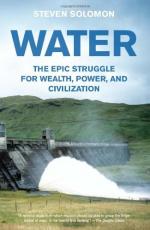|
This section contains 1,886 words (approx. 7 pages at 300 words per page) |

|
If affluence is defined as an abundance of money and material goods, more humans than ever before are affluent beyond what could have been imagined a few generations ago. This growth and diffusion of affluence has been made possible in large part by advances in science and technology. Indeed, the political, social, and economic viability of contemporary market democracies has become linked to a considerable extent to the ability of scientific research and technological innovation to catalyze the growth of affluence. But technologically enabled material success brings with it substantial contradictions, in terms of distributional equity, environmental impacts, and the very notion of what "quality of life" means. These contradictions in turn challenge conventional thinking about the pursuit of affluence and the role of science and technology in society.
Economist Robert Solow (1957) estimated that technological innovation accounts for about half of all economic growth, and subsequent research has...
|
This section contains 1,886 words (approx. 7 pages at 300 words per page) |

|


